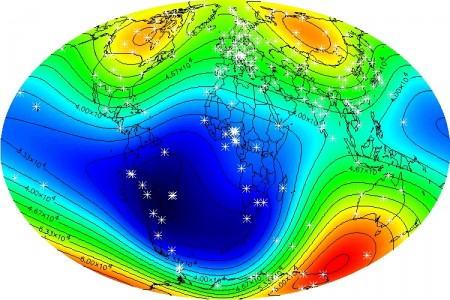Evidence of weakening of the magnetic field, and it’s geographically inconsistent nature, has been tracked for decades, but the November 2013 launch of the European Space Agency’s three satellite Swarm constellation has allowed unprecedented precision in measuring these changes.
The field is a result of the Earth’s iron core acting as a giant magnet. However, the core is not stable, with the magnetic north and south poles wandering around at rates of around 15 km/year for most of last century, and recently accelerating. Over periods of millions of years the poles sometimes switch places, and there is some speculation that such a switch is coming soon, forming the plot for a Hollywood flop.
The north magnetic pole is currently moving towards Siberia from its location in Canada.
The field averages a strength of around 40,000nT, so even the loss of 80nT over North America (see above) is small. However, this is in a period of just six months – should the trend continue for long enough the effects could eventually become serious. A weaker magnetic field would expose the planet to increased radiation, both from distant supernovae and from the solar events, although there is no evidence that the doomsday scenario of a planet temporarily without any magnetic field at all has ever occurred.
(Read the rest of the story here…)
